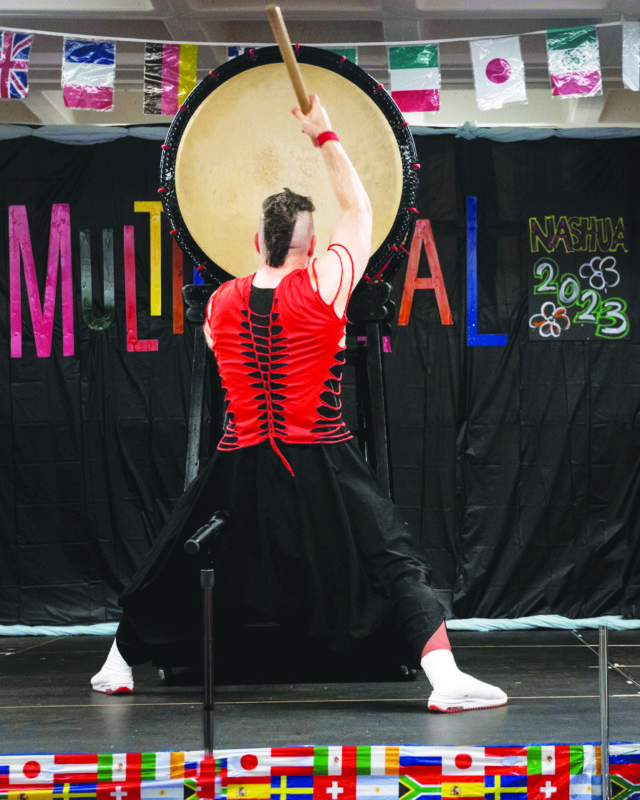Stephane Wrembel brings Triptych to UNH
By Michael Witthaus
mwitthaus@hippopress.com
Triptych is the latest album from French guitarist Stephane Wrembel. The expansive 20-song collection is a meditation on life, represented in three musical movements. It’s a collaboration with pianist Jean-Michel Pilc, which came together after Wrembel’s manager suggested that the two connect. Initially, Wrembel was reluctant.
“Piano and guitar are very difficult to marry,” he said by phone recently. “It’s a difficult match because we kind of occupy the same space, and it’s very easy for tones to clash.” He decided to give it a try anyway, and quickly became enamored of the pianist. Pilc is renowned for his improvisational skills and has an impressive resume. His credits include time as music director and pianist for Harry Belafonte.
At the time, Wrembel had a concert series at Joe’s Pub in New York City coming up to celebrate the release of Django l’impressionniste, a collection of 17 preludes for solo guitar.
“Django is also influenced by Claude Debussy, so I wanted to do something around him,” he recalled. That’s when Pilc’s name came up; the two had not yet met.
He was recruited for the shows, and “the chemistry was immediate and so powerful that we decided to record together,” Wrembel said. “I had the instinct that we needed to go to the studio and record a triptych. I had the vision of a triptych. I didn’t know why, but I could see that it was the right thing to do.”
It’s a true collaboration, with both Wrembel and Pilc contributing new songs. Overall, the album is anchored by selections from Django Reinhardt like “Douce Ambiance,” which is transformed by Pilc’s piano flourishes in the intro before settling into a joyous jazzy rhythm familiar to fans of Reinhardt.
Wrembel is a devotee of the legendary guitarist. As David Fricke wrote in 2009, he “studied Reinhardt’s fleet precision and soulful swing the hard way — playing in actual Gypsy camps.” He lived in the Paris neighborhood where Reinhardt spent his final years and considers him an essential musician.
“Django is to the guitar what Bach is to the keyboard,” he said. “When you practice Django, you become a better guitarist; it’s automatic. You will understand the guitar better, you will see things better, you have a better technique, so everything about your playing is going to be better. Django is an archetypal source like that.”
Triptych’s first movement begins with “Ecco Homo” — an introduction, Wrembel explained. “It means ‘here is the man,’” he said. “It’s the birth of the triptych.” The next section starts with “Jonathan Livingston Seagull,” a Wrembel composition that provides insight into what informs him beyond gypsy jazz.
The first song Wrembel recalls hearing as a very young child is Pink Floyd’s “Comfortably Numb.” He’s progressed past rock, but “those sounds are still there, I make no difference between Debussy, Pink Floyd, Chopin,” he said. “All that’s the same for me.”
There’s a link to the ’70s literary touchstone in Floyd’s song “Echoes,” Wrembel continued. “It’s about an albatross hanging motionless upon the air,” he said. This led him to Richard Bach’s novel, and “the idea of a floating seagull that tries to find what’s noble in its own nature rather than just finding food. It’s a beautiful tale.”
The third section of Triptych is its most ambitious, beginning with “Life In Three Stages Part I: The Child and the Desert,” continuing with “Part II: Building a World” and concluding with “Part III: Old Age, Grace and Wisdom.” The last offers an elegiac cadence that’s gorgeous and haunting, with Wrembel and Pilc the only musicians.
The final movement’s tone reflects Wrembel’s own sentiments.
“I’m 50, I’m entering old age,” he said. “That’s the third stage, where I believe that as an artist, if you keep working and concentrating and studying philosophy, it’s possible to reach very high levels of consciousness. You don’t think the same when you are 50 than when you are 20, and probably you don’t think the same when you are 80 than when you are 50. Every time there is more and more wisdom coming.”
Triptych – Stephane Wrembel Band with Jean-Michel Pilc
When: Friday, Sept. 13, 8 p.m.
Where: Johnson Theatre, 50 Academic Way, Durham
Tickets: $10 and $12 at stephanewrembel.com
Featured photo: Courtesy photo.






